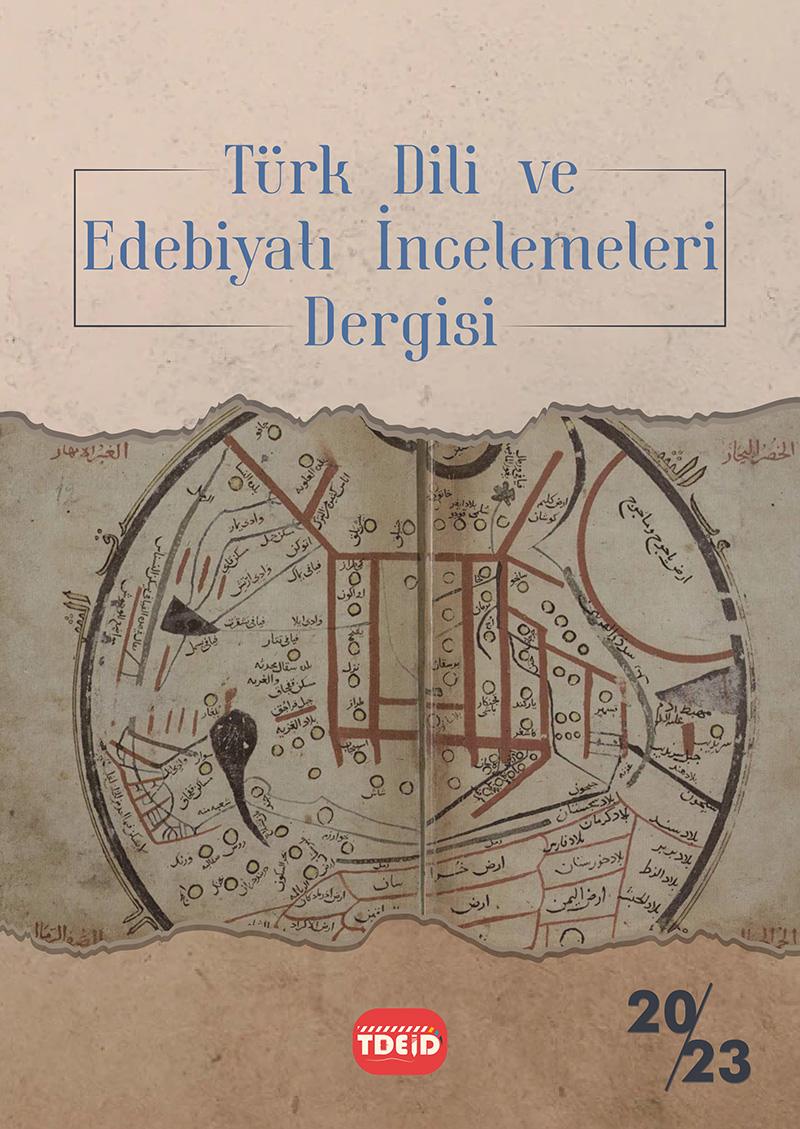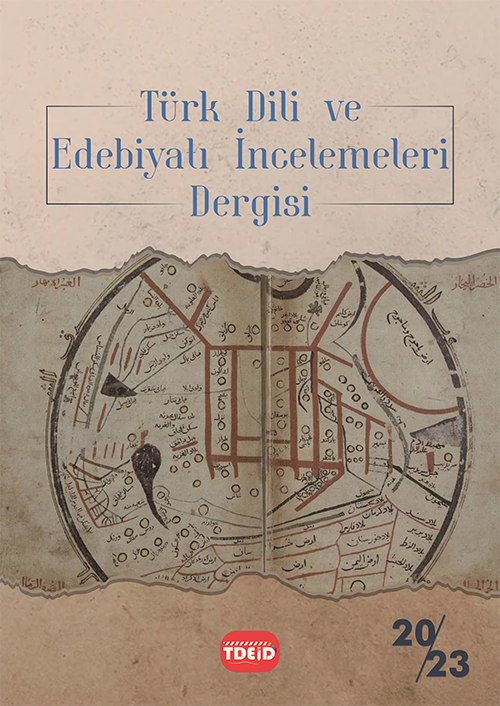Speakers Living in Altınözü District Dialect Features 1 (Consonants)
DOI:
https://doi.org/10.5281/zenodo.8209774Keywords:
Altınözü Dialect, bilingualism, konsonantsAbstract
This research was carried out to determine and examine the properties of consonants in the dıalects of bilingual speakers living in Altınözü district of Hatay province, which has hosted many civilizations. For this purpose, an examination and evaluation was made on the characteristics of the consonants used in the region, based on the texts compiled from the mouths of bilingual speakers of Altınözü District. Arabic is spoken in these regions where Sunni, Alevi and Christian Arabs living in Altınözü district have settled. Bilingual speakers living in the district prefer Arabic more in daily life. Turkish is spoken in public and in relations with foreigners. Examples of code changes have been identified in bilingual speakers residing in Altınözü, whose mother tongue is Arabic. As can be seen in the compiled texts, they also use the Arabic equivalent of the word while speaking Turkish. Studies examining Anatolian dialects are studies that were first started by foreign scientists at the end of the 19th century at the article level. The subject of Anatolian dialects was handled directly by Turkish scientists for the first time in the early 20th century.
In the research findings, sound changes were detected in the dialects of bilingual speakers living in Altınözü district, as in the historical development of Oghuz Turkish, and in many Anatolian dialects today. The aspects that have the same usage with the standard language and the aspects that differ according to the standard language were also determined in the research. Bilingual speakers, who learn Turkish later, use the standard language more properly compared to other regions of Hatay.
References
Akca, Hakan (2015). Ankara İli Ağızları. Ankara: TKAE Yayınları.
Bölükbaş Kaya, F.,Hançer, F. ve Golynskaıa, A. (2019). Bilingualism. İstanbul: International Journal of Languages’ Education and Teaching Volume 7, Issue 2, June .s. 98.
Cengiz, Alim Koray (2006). Dil- Kültür İlişkisi Açısından Hatay' da İki Dillilik( Yayımlanmış Yüksek Lisans Tezi).Hatay: Mustafa Kemal Üniversitesi Sosyal Bilimler Enstitüsü.
Ercilasun, Ahmet B., (2002). Kars İli Ağızları. Ankara:TDK Yayınları.
Ercilasun, Ahmet B. (2004). Başlangıçtan Günümüze Türk Dili Tarihi. Ankara:Akçağ Yayınları.
Gemalmaz, Efrasiyap (1989). Ağız Bilimi Araştırmaları Üzerine Genellemeler. Halil Fikret Alasya'ya Armağan. Ankara: Ankara Üniversitesi Basımevi.
Gülensoy, Tuncer(1988). Kütahya ve Yöresi Ağızları. Ankara: TDK Yayınları.
Günşen, Ahmet (2000). Kırşehir ve Yöresi Ağızları. Ankara:TDK Yayınları.
Karahan, Leyla (1996).Anadolu Ağızlarının Sınıflandırılması. Ankara: TDK Yayınları.
Korkmaz, Zeynep (1994). Nevşehir ve Yöresi Ağızları. Ankara: TDK Yayınları.
Korkmaz, Zeynep (1992). Gramer Terimleri Sözlüğü. Ankara: TDK Yayınları.
Öztürk, Jale (2009). Hatay Ağzı. Ankara: Karahan Kitabevi.
Öztürk, Jale (2014). Hatay İli Samandağ İlçesinde Yaşayan İki Dilli Konuşurların Ağız Özellikleri, Prof. Dr. Mehmet Özmen Armağanı, Çukurova Ü. Basımevi Müdürlüğü, s.263-276.
Timurtaş, Faruk K. (2012). Eski Türkiye Türkçesi. Ankara: Kapı Yay.
Tietze, Andreas (2002). Tarihi ve Etimolojik Türkiye Türkçesi Lugatı. İstanbul: Simurg Yayınları, C 1, s. 130.
Türkçe Sözlük (2011). Ankara: TDK Yayınları .
Altınözü Kaymakamlığı, Altınözü İlçesi, http://www.altinozu.gov.tr/altinozu-tarihi, Erişim tarihi:
Downloads
Published
How to Cite
Issue
Section
License
Copyright (c) 2023 Türk Dili ve Edebiyatı İncelemeleri Dergisi

This work is licensed under a Creative Commons Attribution 4.0 International License.







